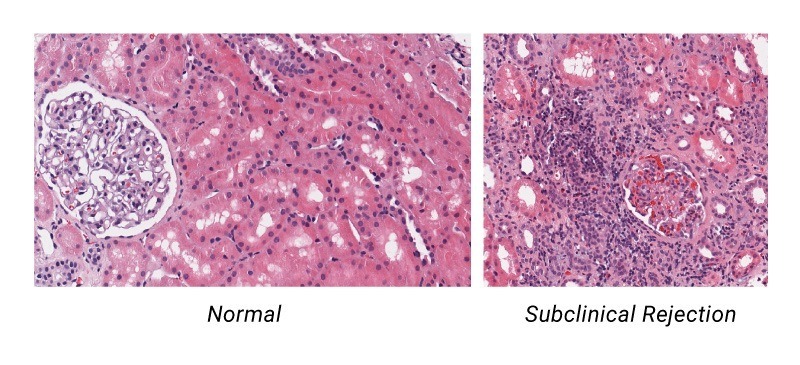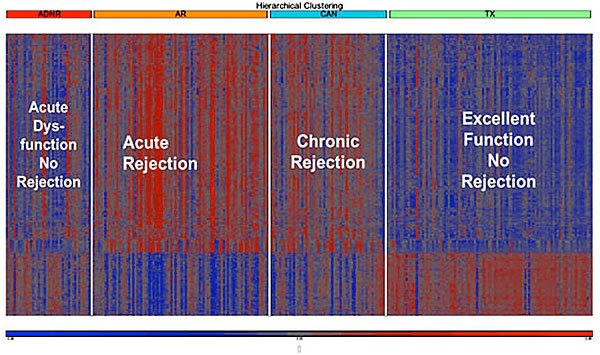
Information for Transplant Clinicians - Transplantation, Silent Rejection, and Our Tests

How Do You Anticipate Allograft Rejection of Organ Transplants?
Transplant recipients require frequent monitoring after transplant to assess the ongoing health of their transplanted organs. Following the transplant, recipients must adhere to a complex regimen of immunosuppressive medications, many with potential side effects, to maintain a healthy transplanted organ.
Protocols for the current standard of care for post-transplant monitoring typically rely on serial testing of immunosuppressive drug levels; serum or enzyme testing; painful, expensive, and invasive surveillance biopsies; and the clinical appearance of rejection symptoms, indicating early allograft rejection. These insensitive, late-trailing indicators of graft function may not appear until significant organ damage occurs, leaving clinicians and patients with fewer options to improve organ health before more severe complications occur.
Eurofins Transplant Genomics is at the forefront of diagnostic technology to change the standard of care in transplantation, providing noninvasive genomic tests to identify early subclinical rejection and optimize immunosuppressive therapy.
Transplant Genomics Tests for Detecting Subclinical (“Silent”) Organ Rejection
Immunological rejection is a leading cause of graft failure. Recent research points to “silent” subclinical acute rejection (subAR) in patients with stable renal function as a key component of this problem.
SubAR is termed “silent” because it cannot be detected by current non-invasive standard of care tests and requires an invasive tissue biopsy. 25% of stable kidney transplant patients are experiencing silent rejection—organ failure before observable symptoms of rejection appear—that lead to worse outcomes.
Transplant Genomics’ approach to the management of transplant patient care is based on precision medicine. Precision medicine hinges on the ability to characterize individuals based on a wide range of molecular and phenotypic data—genomic, epigenomic, proteomic, and other—that together convey a more accurate image of diagnosis that is personalized and multifaceted.

TruGraf® Blood Gene Expression Test
TruGraf® is a non-invasive test that measures differentially expressed genes in the blood of transplant recipients to identify patients who are likely to be adequately immunosuppressed and, in doing so, rule out graft damage. TruGraf measures the difference in gene expression for a precise panel of specific genes that have been empirically determined to discriminate between allografts that are truly healthy (Transplant eXcellence, or TX), and those in transplant patients that are ”silently” subclinically rejecting (not-TX) with no other suspicion of rejection.
Transplant eXcellence (TX) means that the transplanted organ is expected to be adequately immunosuppressed
not-TX means that the transplant organ is likely to be inadequately immunosuppressed.
Resources for Transplant Clinicians
Transplant Genomics is your partner in improving the lives of transplant patients. We offer multiple resources for transplant clinicians, including information on subclinical rejection, educational articles and videos, and more.